
Buttercream icing is a classic for frosting and decorating cakes for any occasion. There are four basic kinds of buttercream -- two meringue types that use only egg whites, French buttercream using egg yolks and whole egg buttercream. But most bakers today rely on adaptations of buttercream's core ingredients of butter, sugar, liquid and eggs. Temperature and the ingredients in your buttercream dictate how it should be stored.
Butter
Most buttercream icings made with butter and egg whites or egg substitutes -- called meringue buttercreams – perform best at room temperature. They can be kept out for up to three days – either in a bowl or on a cake -- covered or in a cool, dry place. Butter begins to separate at temperatures between 88 and 98 degrees Fahrenheit. This is not a health concern, but on a hot day, your buttercream can slide off the cake if the fat separates from the whey. Buttercream made with either 100 percent or partial shortening stands up to heat better with a melting point around 106 F, which is why buttercream made with shortening is a popular choice for decorating.
Sugar
Confectioner’s sugar is a main ingredient in buttercream icing and is made from either cane sugar or sugar beets. Humid climates can negatively affect the texture of buttercream icing left at room temperature. Using confectioner’s sugar made from sugar cane ensures consistent quality.
Liquid
Some recipes for buttercream call for a tablespoon or two of milk or cream, while others use water to make a sugar syrup. Because of the large amount of sugar, the U.S. Food Safety and Inspection Services say that buttercream frosting made with small amounts of milk are safe to leave out at room temperature for two to three days. Buttercream made with cream cheese, however, is not safe to leave out and should be refrigerated.
Eggs
Both Swiss and Italian meringue (or mousseline) buttercream is made by whipping egg whites and adding to a sugared syrup that has been cooked to 240 F. This technique yields a stable buttercream suitable for cake decorating and can be stored at room temperature for two to three days. According to Food Safety.gov, frosting made this way is safe to consume, though you can purchase pasteurized egg whites or substitute meringue powder if Salmonella risk is a concern. French buttercream, sometimes called neoclassic buttercream, is made with egg yolks or whole eggs and should be refrigerated because it can separate if kept at room temperature for longer than six hours.
Related Articles

How to Make Cake Frosting Into a ...

Does Cream-Based Frosting Have to Be ...

Can a Cream Cheese-Decorated Cake Be ...

Does Seven-Minute Frosting Need to Be ...
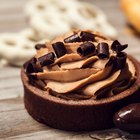
Number of Calories in Chocolate Mousse ...
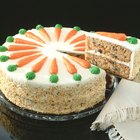
Can Softened Frosting Harden Over a ...
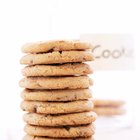
How to Use Expired Cake Mix

How to Decorate Cake Using Heavy ...

Can You Use Heavy Cream When Making ...
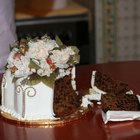
How Early Can You Make a Wedding Cake?

How to Get Tub Frosting to Harden

Do You Need to Refrigerate Whipped ...

Substitutes for Shortening in Frosting

How to Use Gelatin to Thicken Frosting

Does Cream Cheese Filling Have to Stay ...
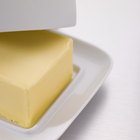
Butter Substitute for Molten Lava Cake

Do Boston Cream Pie Cupcakes Need ...
What Frosting Goes Well With Angel Food ...

How to Make Lactose Free Icing

Can You Refrigerate a Cake You Ice With ...
References
- The Cake Bible; Rose Levy Beranbaum
- What's Cooking America: Buttercream Icing 101
- Food Safety.gov: Eggs and Egg Products
Resources
Writer Bio
For more than 10 years, Carol Butler has run a small, off-grid furniture business with her husband and is a regular contributor to the Edible community of magazines. As staff writer for RichLife Advisors, she covers financial planning and other industry-related topics. She holds a B.F.A. in theater arts.
Photo Credits
Thinkstock/Comstock/Getty Images